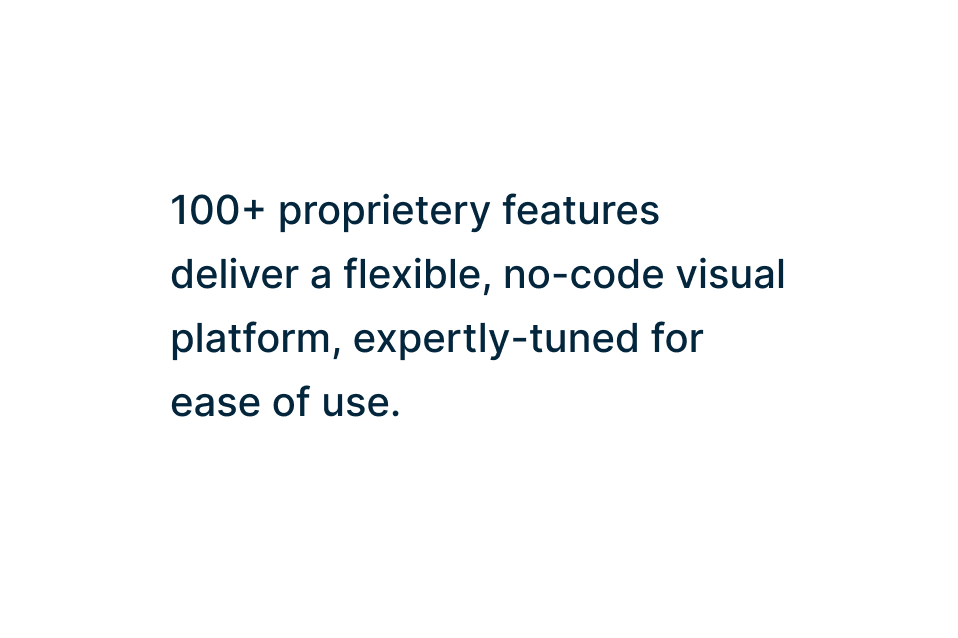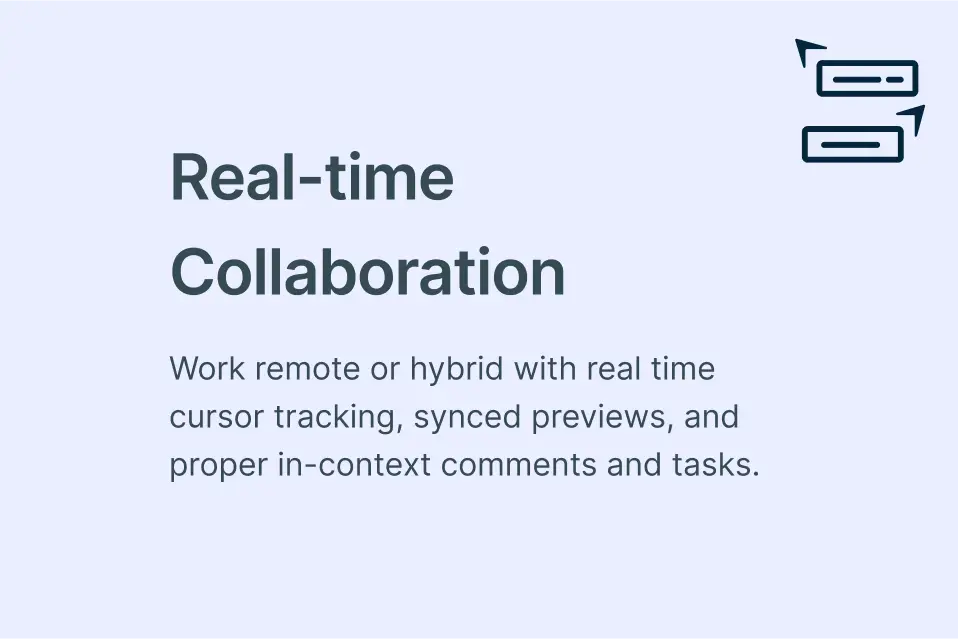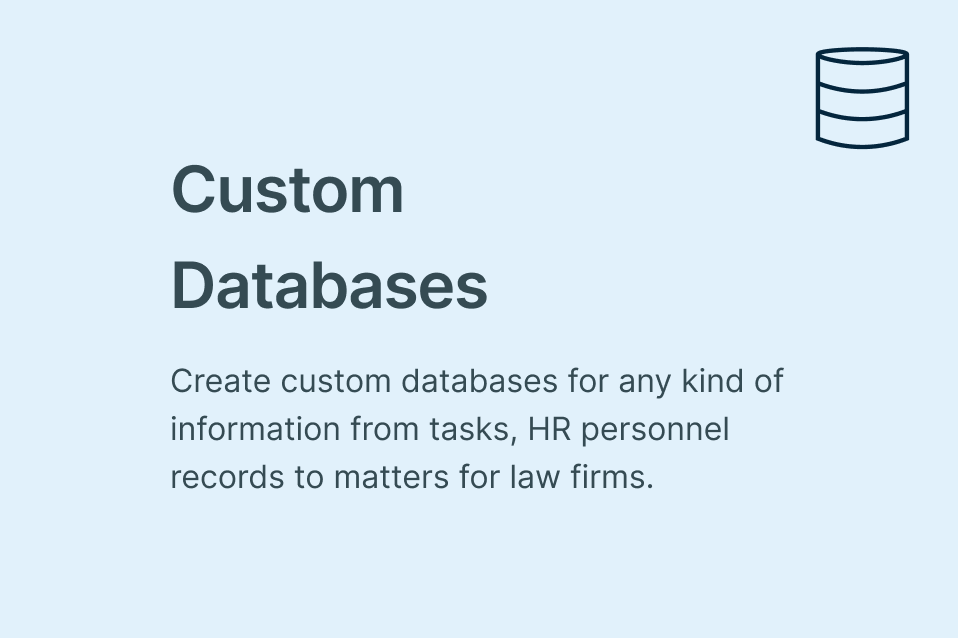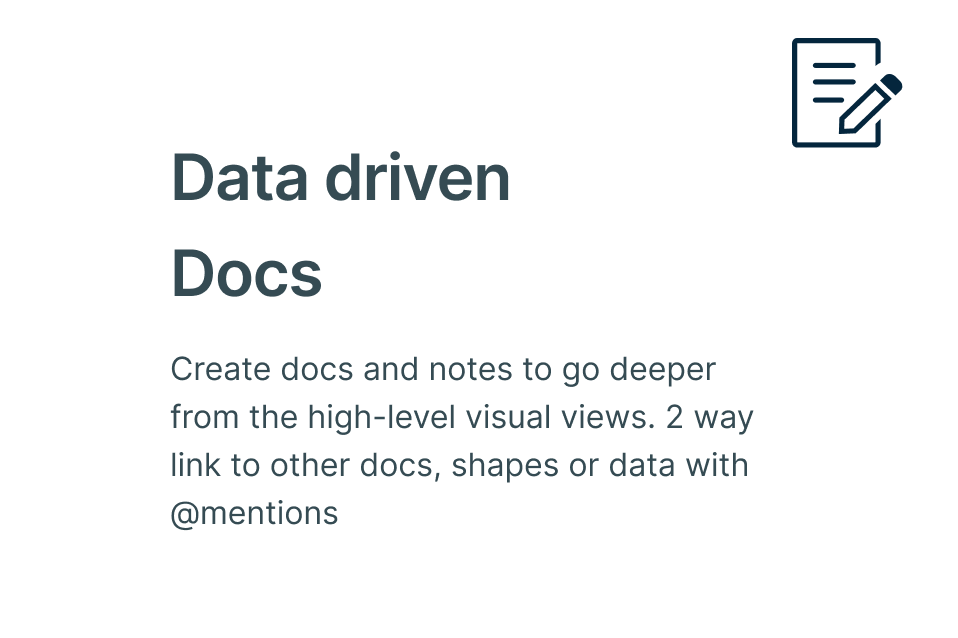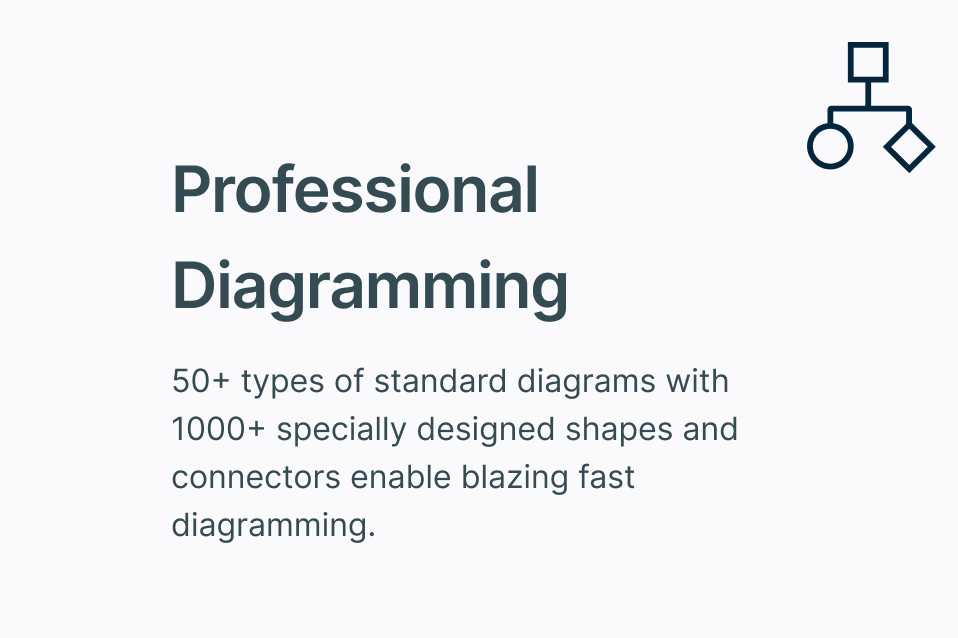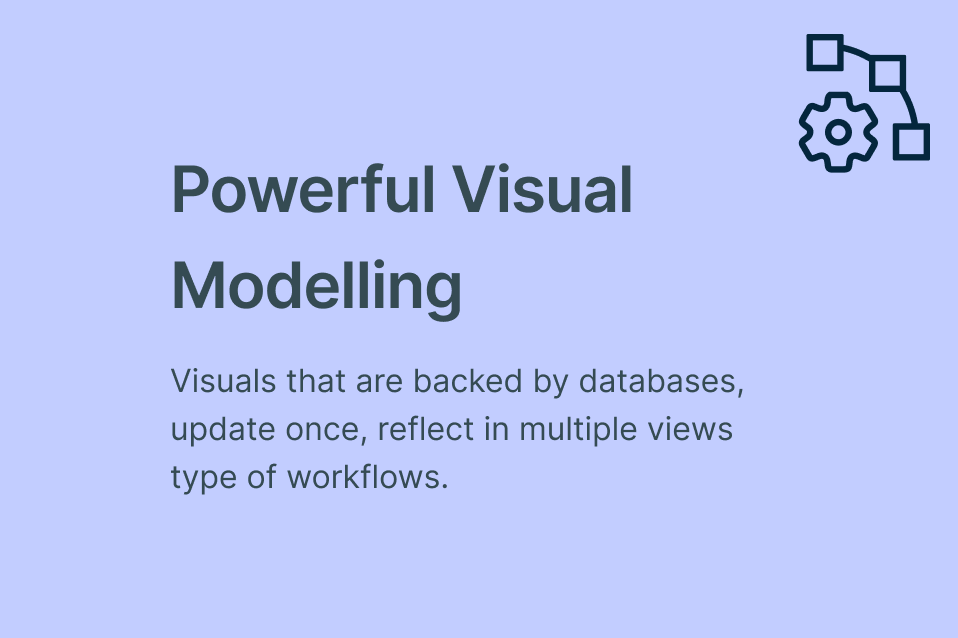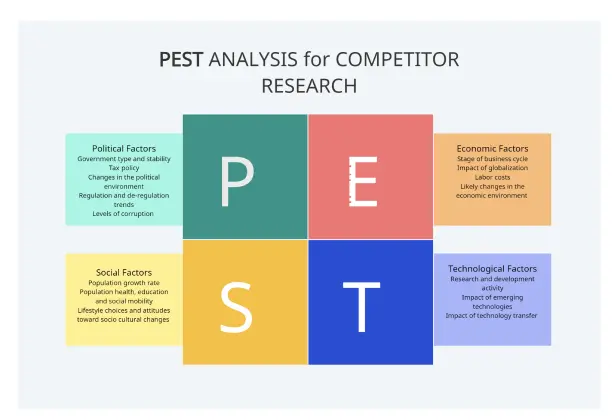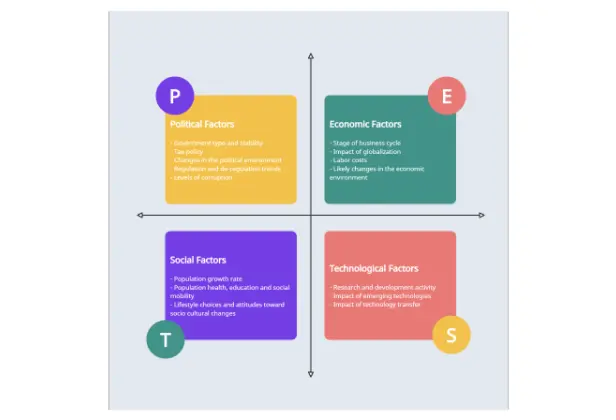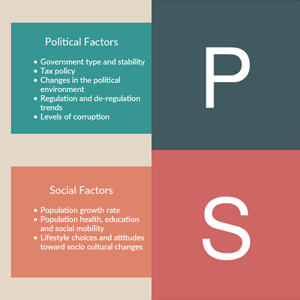PEST Analysis Tool
Elevate Your Strategy with PEST Analysis
Use AI-driven insights to analyze macroeconomic factors impacting your business and develop innovative strategies with your team to overcome challenges.
- AI-generated PEST analysis frameworks and ready-to-use templates to get you started
- Easy-to-use visual canvas for brainstorming and planning sessions
- Real-time collaboration to engage seamlessly with stakeholders
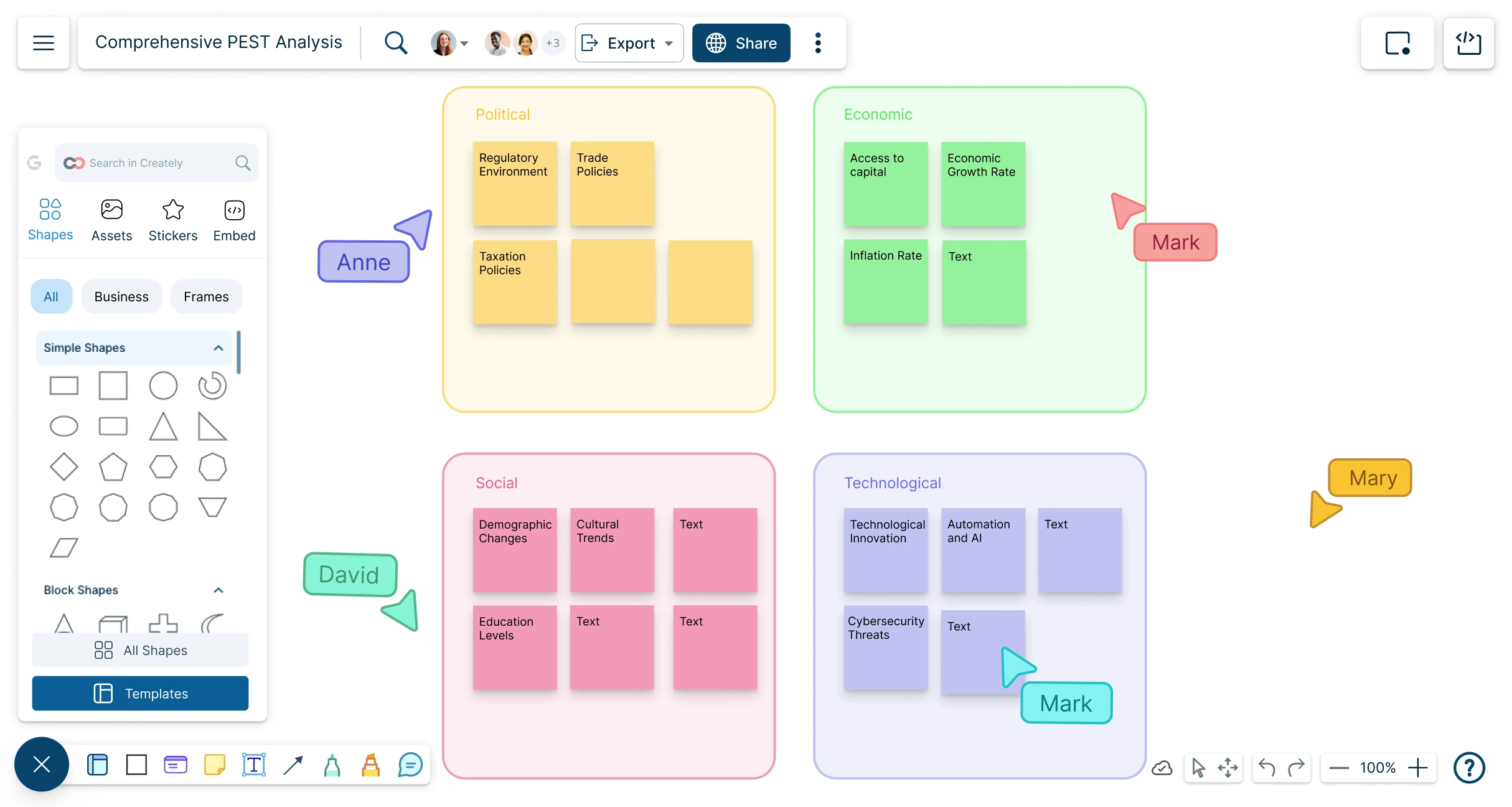
 Diagramming
Diagramming Visual Collaboration
Visual Collaboration Org Chart
Org Chart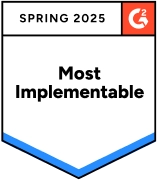
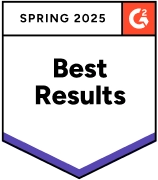

AI PEST Analysis Generator
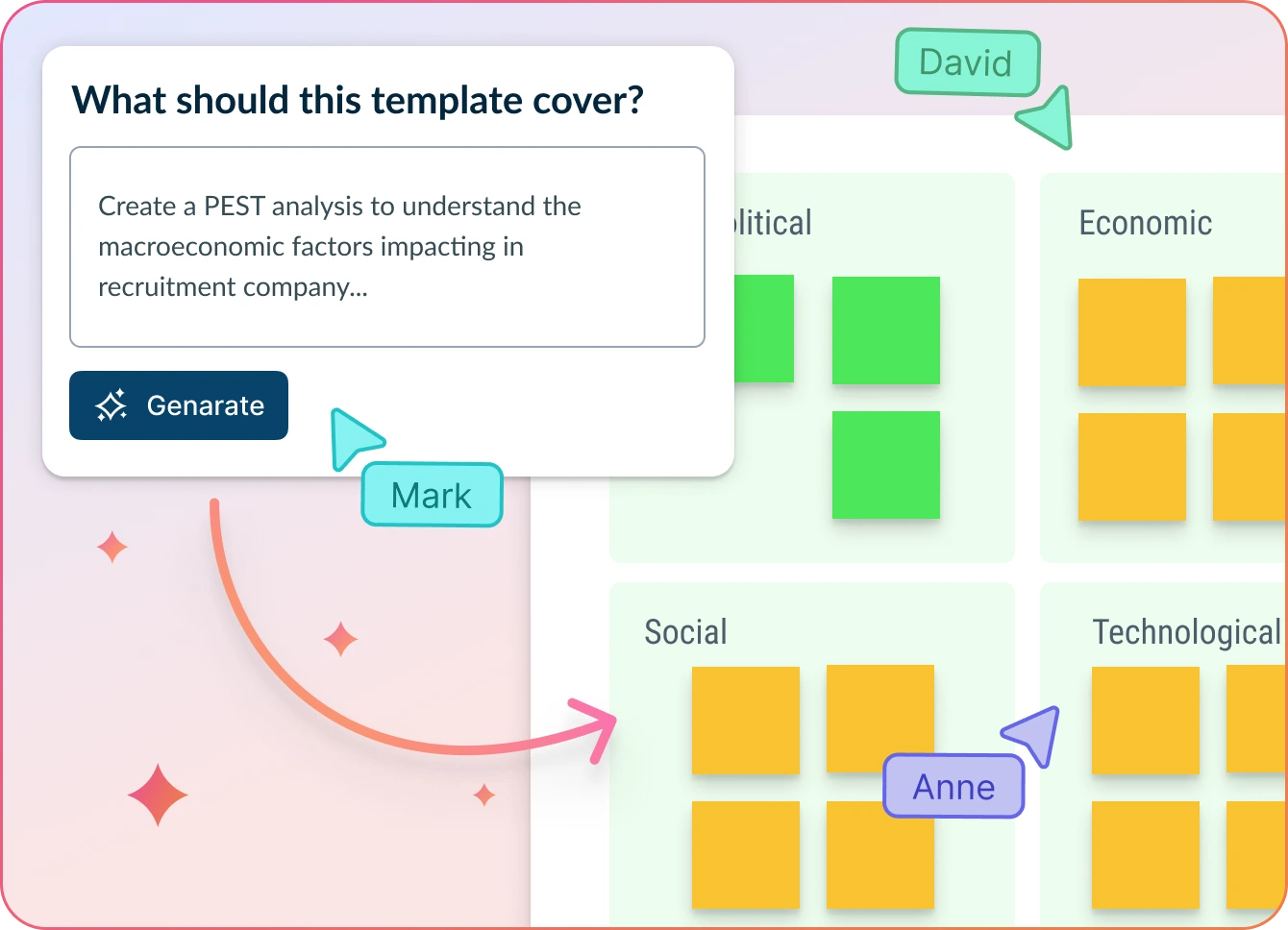
Instantly Assess Business Environments
- Enter background info, data or details of your business and click ‘Generate’
- Watch Creately build a comprehensive PEST analysis with notes.
- Collaborate, edit/change, and refine as you please—all within one canvas.
Why Teams Love Creately’s AI PEST Analysis Generator
 Save time – Automate PEST analysis, reducing manual effort and allowing teams to focus on strategic decision-making.
Save time – Automate PEST analysis, reducing manual effort and allowing teams to focus on strategic decision-making. Uncover hidden trends – Detect political, economic, social, and technological shifts that traditional analysis might not uncover.
Uncover hidden trends – Detect political, economic, social, and technological shifts that traditional analysis might not uncover. Privacy-first – All data remains within Creately, ensuring security with no third-party retention.
Privacy-first – All data remains within Creately, ensuring security with no third-party retention. Global collaboration – Works seamlessly across multiple languages, making it ideal for a fully global and diverse team.
Global collaboration – Works seamlessly across multiple languages, making it ideal for a fully global and diverse team. Objective insights – AI-driven clustering highlights key external factors, ensuring balanced and unbiased analysis.
Objective insights – AI-driven clustering highlights key external factors, ensuring balanced and unbiased analysis.

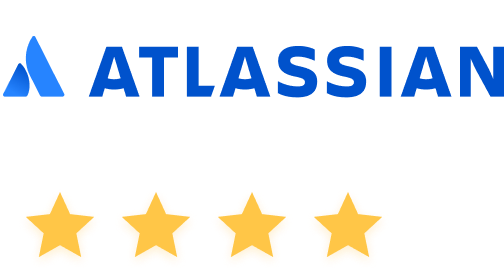


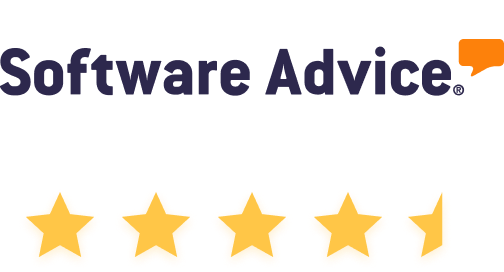

Identify External Factors with Our PEST Analysis Creator.
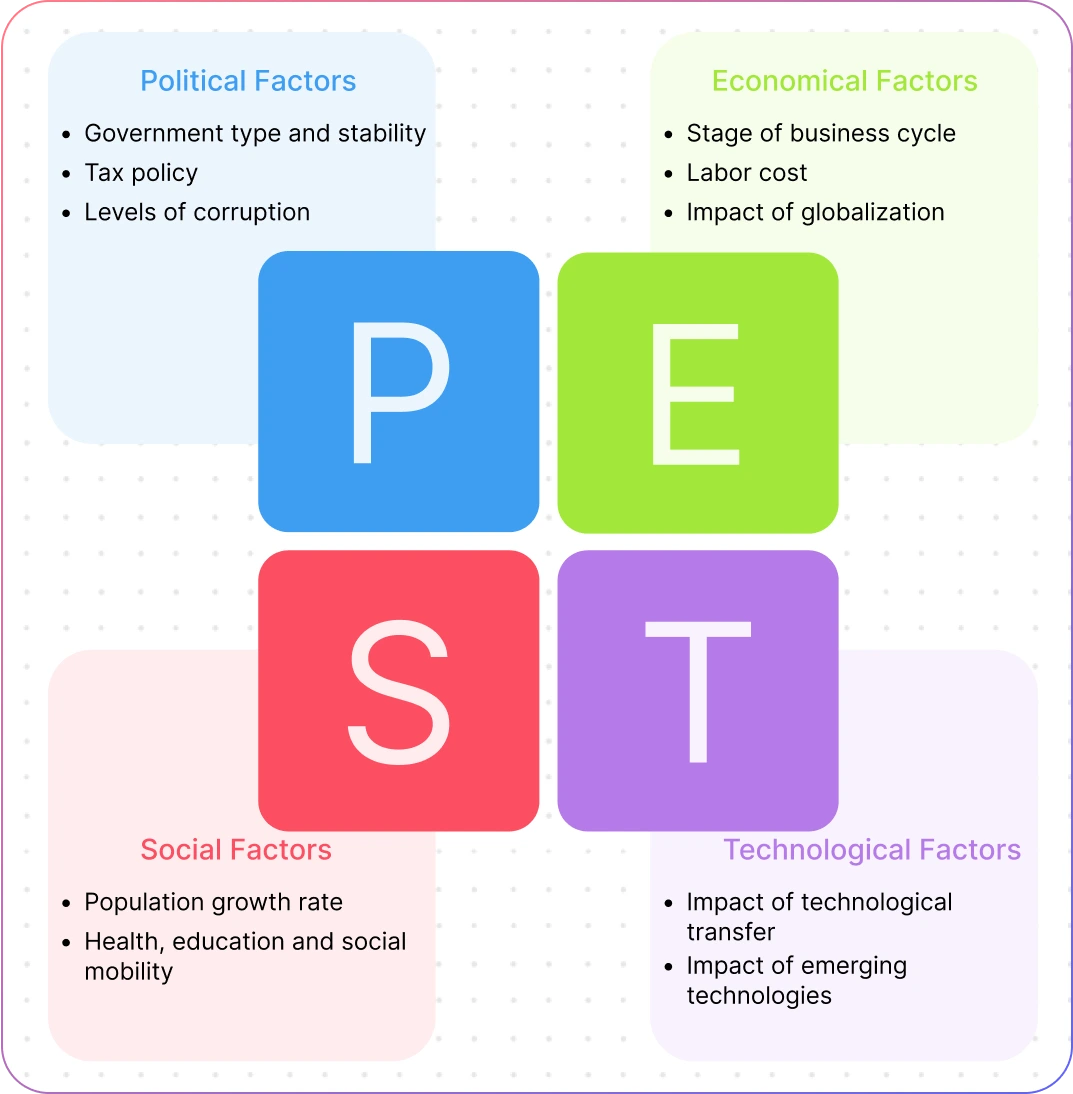
Intuitively adapts to pre-built PEST analysis frameworks to conduct competitor analysis, strategic planning, and more based on your input.
PEST analysis tool provides AI-suggested insights into industry trends and consumer behaviors.
Automate your brainstorming and save time.
Customizable color themes and PEST analysis templates to highlight key factors and rank them based on influence and impact.

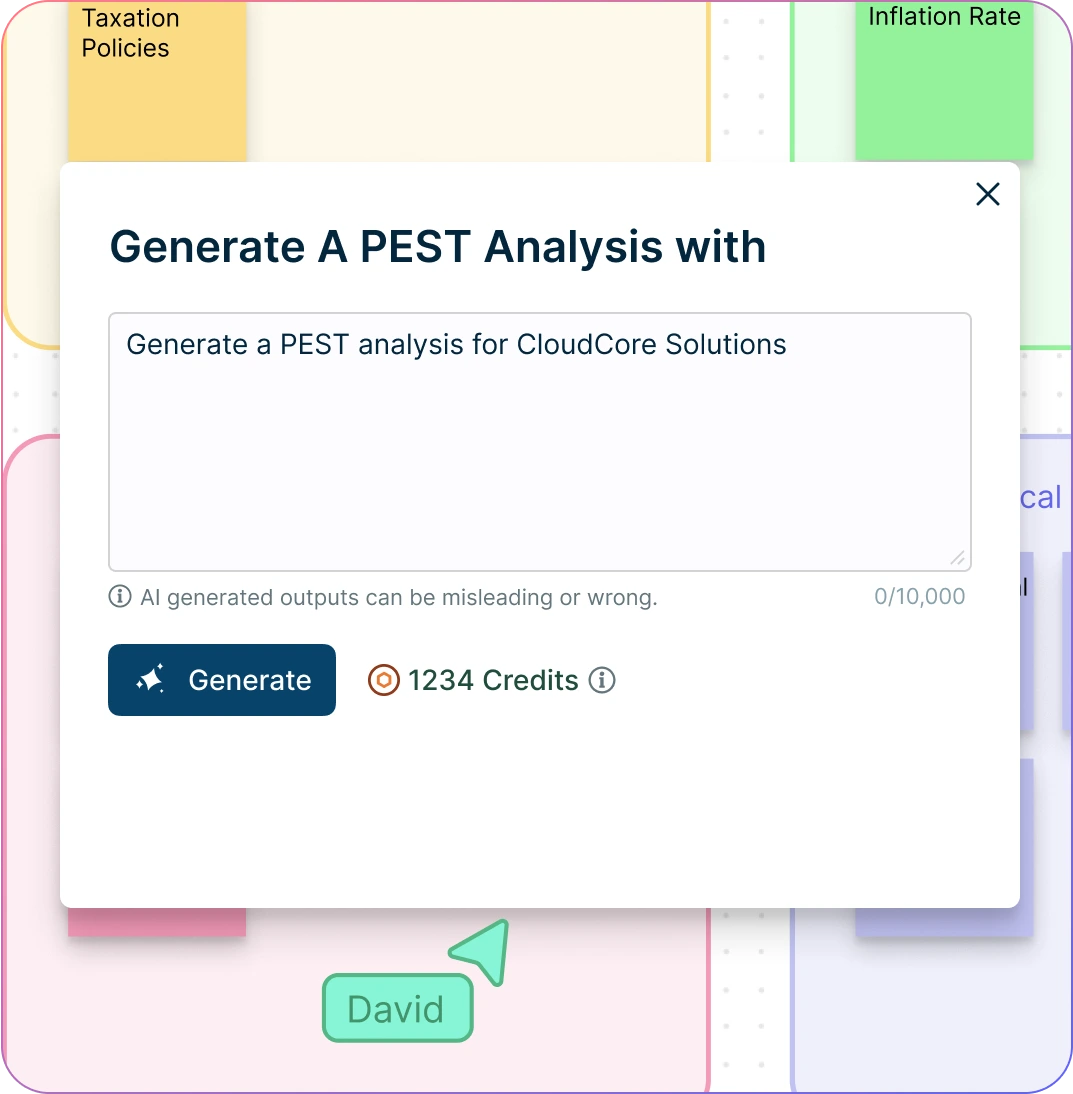
Effortless Automation, Instant Insights!

As simple as telling the PEST analysis creator what you need to start the analysis.
Produce auto-generated templates with environmental factors like political, economical, social and technological already filled to match your context.
Identify external factors previously unnoticed through AI-enabled analysis.
Refine your analysis further with thematic grouping.
Discuss, Plan, and Work Together
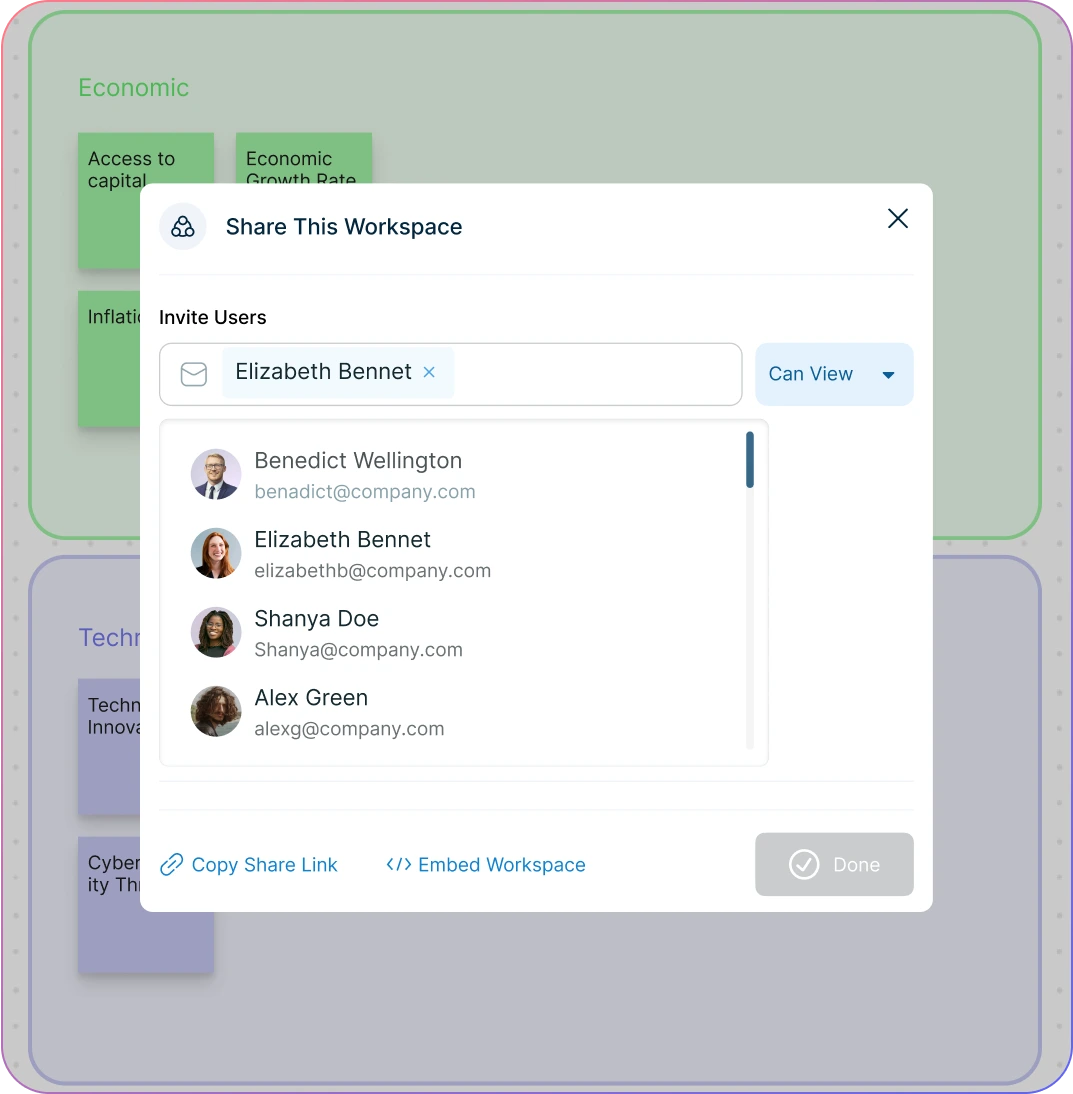
Work with teammates on a shared canvas with real-time cursors for all participants.
Use sticky notes or annotations to mark future discussion points for factors highlighted by the PEST analysis tool.
Invite team to add docs, attachments, links, and more via the notes panel to capture the big picture.
Use commenting and @mentions on the canvas to tag team members to specific items.
Manage, share, edit and review plans and strategies with access levels and roles.


Built-in Sharing, Presenting, and Version Control

Export diagrams in JPEG, PNG, PDF and SVG formats or enable link sharing to embed on any site.
Create presentations for stakeholders with built-in tools like the presentation mode.
Easily track edits and restore previous versions with Creately’s Workspace History—ensuring seamless collaboration and version control.
What Is a PEST Analysis?

Why is a PEST Analysis Important for a Team in Strategic Planning?
A PEST analysis helps teams to identify opportunities and threats. By looking at and analyzing the political, economic, social and technological factors that affect the industry, teams can pinpoint emerging trends and changes.
By studying the external environment, teams can plan for future opportunities or threats better by adjusting the business strategies.
Teams can gain a better understanding of the market that the business is operating in. They can figure out consumer and market trends and changes in the market to respond appropriately.
Teams can take necessary steps to manage risks by identifying potential threats to the business. This may include developing contingency plans or making certain investments.
A PEST analysis can help teams make better and informed decisions about strategic investments, expansions, and other business initiatives.
How to Use Creately’s PEST Analysis Tool
Start with the PEST Analysis Template
Open Creately and select the PEST analysis template that fits your requirement from the template library. Creately offers multiple options based on the PEST framework.
Start Filling Your PEST Analysis Template
After opening the PEST analysis template, add the relevant information about Political, Economic, Social, and Technological factors affecting your business. Group them accordingly within the template, add notes for context, and use @mentions to notify team members if you need their input.
Use AI to Auto-Generate Your PEST Analysis
If you want to skip the manual steps, select the AI-powered PEST Analysis Generator. Enter a brief description of your business, and Creately will automatically create a PEST template, filling in key Political, Economic, Social, and Technological factors based on your context.
Manually Customize your PEST Analysis
Edit the generated content and manually add your own insights where needed. Creately provides drag-and-drop content blocks, and customizable colors, fonts, and layouts to fit your brand. You have the option to add sticky notes, related documents and spreadsheets for additional context.
Invite your Team to Collaborate and Refine the Analysis in Real-time
Invite team members to view and discuss the content generated by the PEST analysis tool, including their perspective on the suggested insights. Creately allows teams to co-edit, comment, and vote on ideas directly within the canvas—speeding up the review process.
Export, and Share your PEST Analysis
When ready, present your PEST analysis to the relevant stakeholders using Creately’s built-in slideshow or export it as an image. You can also create shareable links to show external parties with multiple levels of permissions.
Create a PEST AnalysisConduct Your PEST Analysis with These Editable Templates
FAQs About the PEST Analysis Maker
Can I customize a PEST analysis?
What is the difference between PEST and PESTLE analysis?
Can we do a PEST analysis using AI?
Is Creately’s PEST Analysis Tool free to use?
Who should use a PEST analysis tool?
What is the difference between PEST and SWOT analysis?
How often should I conduct a PEST analysis?







